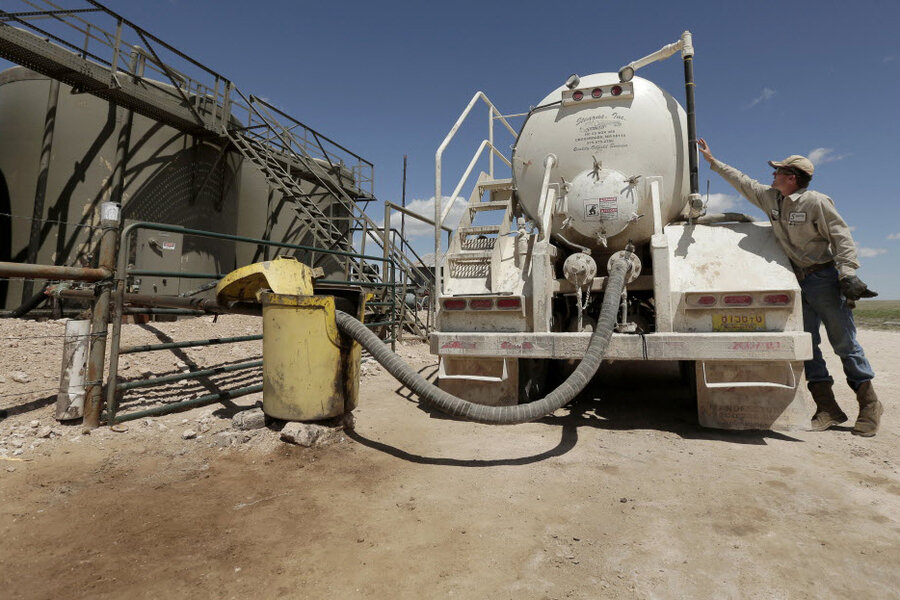How to limit fracking quakes: Drilling experts offer best practices
Loading...
A new report from a coalition of industry experts and academics conclusively links hydraulic fracturing and fracking wastewater disposal to local seismic activity, but stops short of prescribing model regulations.
The 150-page report from the StatesFirst initiative – a group of seismologists, academics, and industry experts in American drilling states – matter-of-factly links both hydraulic fracturing and wastewater disposal to earthquakes near drilling areas.
Previous research into tremors in mid-continent drilling states like Texas, Oklahoma, Colorado, and Ohio had only tentatively identified fracking as a cause. The paper released today represents an unusually candid discussion of the topic, acknowledging both that the issue exists and that it will be difficult to solve.
Fracking involves blasting thousands of gallons water and chemicals into underground rock formations to crack open the rock, releasing oil and natural gas trapped inside. The mixtures used must then be trucked offsite and injected into deposits even deeper underground. The injection has been linked to seismic activity that even humans can feel.
Environmentalists and the energy industry have been butting heads over the practice for years, both over its tendency to cause earthquakes and also its potential to contaminate nearby drinking water.
Ohio Oil & Gas Chief Rick Simmers, who co-chaired the group that issued the report, says that state-specific differences in drilling laws and geology meant uniform national regulations would be ineffective.
“A one-size-fits-all approach would not be an effective tool for state regulators,” the report says.
Mr. Simmers says the report serves mostly as a primer for states, providing up-to-date scientific and technical data, along with suggested approaches for detecting and managing earthquakes.
Many of the tremors produced by fracking and wastewater go unnoticed, but some are easily detected. The US Geological Survey reports that within the central and eastern United States the number of earthquakes has “increased dramatically” along with an increase in wastewater injection activity. Between 1973 and 2008 the region averaged 21 earthquakes of magnitude three and larger each year. From 2009 through 2013 that rate jumped to 99 magnitude 3 or higher earthquakes per year.
Magnitude 3 earthquakes are large enough to be felt by people. The USGS also reported some larger events, including an M5.6 in Oklahoma and M5.3 in Colorado.
Simmers said that both fracking and deep-injection wastewater disposal do create some seismicity, but added that relative to the amount of drilling activity tremors are “very rare.”
“If you compare it to the amount of fluid that’s injected for disposal or the amount of fluid and the number of jobs that occur for hydraulic fracturing, it’s very rare,” he told the Associated Press. “But it does occur.”
The report focuses on deep-injection wastewater disposal, which it says are the types of wells most responsible for causing earthquakes, but Rex Buchanan, interim director of the Kansas Geological Survey and co-chair of the working group, told AP that human-induced seismicity “is a complex issue where the base of knowledge is changing rapidly.”
“State regulatory agencies that deal with potential injection-induced seismicity should prepare to use tools, knowledge, and expertise – many of which are offered in this primer – to prepare for and respond to [any] occurrences,” he added.
Thirteen states, many of which have not experienced any earthquakes, participated in the working group, which arose in April 2014 after the discovery that fracking had caused five small tremors in eastern Ohio. The StatesFirst coalition joined with the Interstate Oil and Gas Compact Commission and the Ground Water Protection Council to produce the report.
Material from The Associated Press was used in this report.








